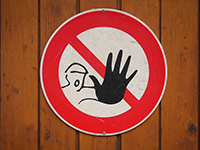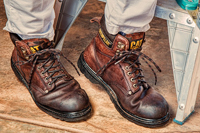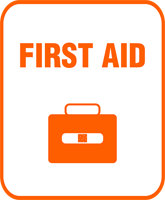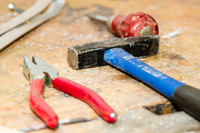What do you do when you get impaled by a drill bit?
Look we warned you this list gets a little gruesome: You unscrew it.
That’s what happened when Ron Hunt tipped his ladder over during a routine drilling job and wound up with the drill bit stick in the second worst place for it to go: his head. The amazing thing is that, today, he’s perfectly fine. The medical team got the bit out, put in some plates, and he made a full recovery. Unfortunately, he was uninsured at the time, so there was some permanent damage, but only to his checking account.
Lumberjack Miraculously OK
Chainsaws have to be the scariest tool to take out on the job with you. Forthman Murff was out chopping some wood when he was struck by the branch of a tree he’d just cut down, knocked into a ditch, and then… well, he caught the chainsaw right in the neck. Amazingly, the saw missed his spine and arteries and he managed to drive himself to a friend’s house where he waited for an ambulance. If that doesn’t convince you that this is the toughest guy alive, he still lists the loves of his life as “Jesus, music and chainsaws.”
Bazooka Joe
You tend not to think much about injury in the armed forces: If your crew has a bad day with a bazooka, you don’t live to tell the tale… unless your name is Channing Moss. Moss’ unit was hit with an RPG attack, and he took it head-on, but instead of detonating, the rocket got stuck on the way through his body. They managed to get the still-live rocket out of him by sawing the fins off, and he made a full recovery. Most army guys would take a bullet for their men, but how many would take a bazooka?
Your best bet for surviving an on-the-job accident is to not get into one. But, it’s heartening to know that the human body can survive a lot more punishment than you might suspect. If you can move quickly in a crisis, if you can apply first aid and think clearly, you might have a chance at getting out of a life-threatening scrape without losing so much as a pinky toe. Not that we’d want to be in the position to find out…















